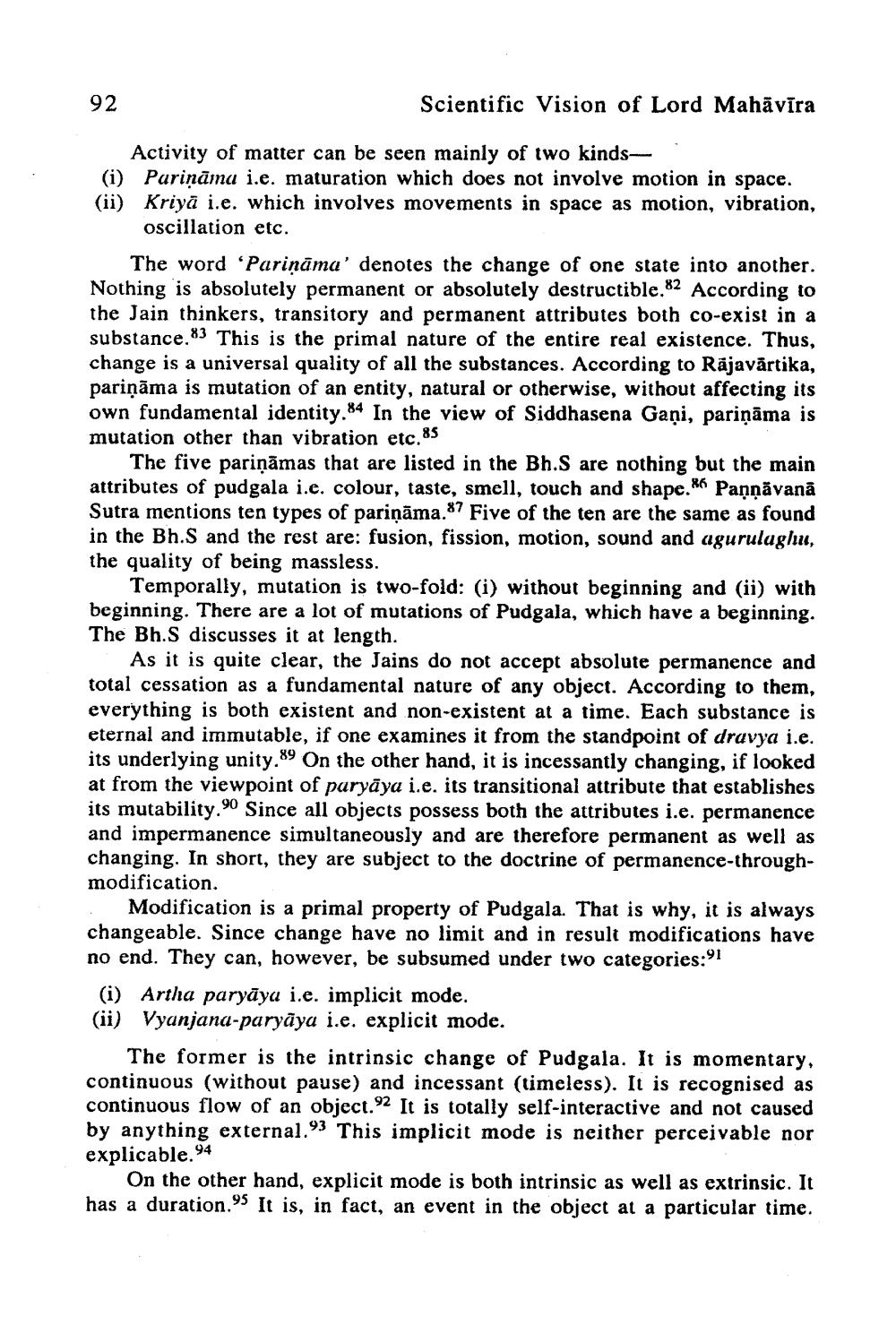________________
92
Scientific Vision of Lord Mahāvīra
Activity of matter can be seen mainly of two kinds(i) Pariņāma i.e. maturation which does not involve motion in space. (ii) Kriyā i.e. which involves movements in space as motion, vibration,
oscillation etc.
The word 'Pariņāma' denotes the change of one state into another. Nothing is absolutely permanent or absolutely destructible.82 According to the Jain thinkers, transitory and permanent attributes both co-exist in a substance.83 This is the primal nature of the entire real existence. Thus, change is a universal quality of all the substances. According to Räjavārtika, pariņāma is mutation of an entity, natural or otherwise, without affecting its own fundamental identity. 84 In the view of Siddhasena Gaņi, pariņāma is mutation other than vibration etc.85
The five pariņāmas that are listed in the Bh.S are nothing but the main attributes of pudgala i.e. colour, taste, smell, touch and shape. 86 Pannāvanā Sutra mentions ten types of pariņāma.87 Five of the ten are the same as found in the Bh.S and the rest are: fusion, fission, motion, sound and agurulaghu, the quality of being massless.
Temporally, mutation is two-fold: (i) without beginning and (ii) with beginning. There are a lot of mutations of Pudgala, which have a beginning. The Bh.S discusses it at length.
As it is quite clear, the Jains do not accept absolute permanence and total cessation as a fundamental nature of any object. According to them, everything is both existent and non-existent at a time. Each substance is eternal and immutable, if one examines it from the standpoint of dravya i.e. its underlying unity.89 On the other hand, it is incessantly changing, if looked at from the viewpoint of paryāya i.e. its transitional attribute that establishes its mutability.90 Since all objects possess both the attributes i.e. permanence and impermanence simultaneously and are therefore permanent as well as changing. In short, they are subject to the doctrine of permanence-throughmodification. . Modification is a primal property of Pudgala. That is why, it is always changeable. Since change have no limit and in result modifications have no end. They can, however, be subsumed under two categories:91
(i) Artha paryāya i.e. implicit mode. (ii) Vyanjana-paryāya i.e. explicit mode.
The former is the intrinsic change of Pudgala. It is momentary, continuous (without pause) and incessant (timeless). It is recognised as continuous flow of an object.o2 It is totally self-interactive and not caused by anything external.93 This implicit mode is neither perceivable nor explicable.94
On the other hand, explicit mode is both intrinsic as well as extrinsic. It has a duration. It is, in fact, an event in the object at a particular time.




